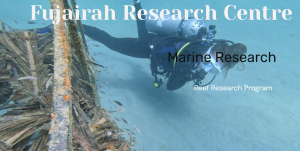
"A New Wave in Marine Conservation: Reef Prototypes Inspired by Traditional Emirati Customs"
A New Wave in Marine Conservation: Reef Prototypes Inspired by Traditional Emirati Architecture
Marine conservation has taken an innovative turn with the development of reef prototypes inspired by traditional Emirati architecture, particularly the structures from Mashad, utilizing palm tree leaves and biomaterials. This groundbreaking initiative, led by the Fujairah Research Centre, aims to create sustainable habitats for fish, enhance biodiversity, and restore damaged marine ecosystems through the application of strict scientific methodologies and real-time environmental monitoring.
The Inspiration: Mashad Architecture
Mashad, a traditional architectural style in the UAE, features intricate designs and sustainable materials, predominantly palm tree leaves. These structures, known for their resilience and adaptability to the harsh desert environment, have now inspired marine researchers to develop artificial reefs. The idea is to leverage the principles of Mashad architecture to construct environmentally friendly reef systems.
The Role of Palm Tree Leaves and Biomaterials
Palm tree leaves are a significant element of traditional Emirati architecture. These leaves, known for their strength and flexibility, provide an ideal foundation for creating reef prototypes. By weaving the leaves into sturdy frameworks and integrating them with biomaterials, researchers are crafting structures that can fit in underwater conditions while promoting marine life proliferation.
Biomaterials, derived from natural sources, play a crucial role in this innovation. These materials, biodegradable and non-toxic, blend seamlessly with the marine environment. They support the growth of corals and other marine organisms, fostering a thriving underwater ecosystem. The combination of palm tree leaves and biomaterials creates a sustainable and ecologically harmonious habitat for marine life.
The Fujairah Research Centre's Scientific Methodology : At the heart of this initiative is the Fujairah Research Centre's commitment to rigorous scientific methodology. The development and deployment of these reef prototypes are guided by strict scientific protocols to ensure their effectiveness and sustainability. The research process involves:
Design and Testing: Initial designs are tested in controlled environments to assess their durability and compatibility with marine ecosystems. This phase includes structural integrity tests, material resilience assessments, and ecological impact studies.
Field Deployment: Once prototypes pass initial tests, they are deployed in selected marine areas. The Fujairah Research Centre conducts extensive baseline studies to understand the existing conditions of these sites, including water quality, biodiversity levels, and habitat health.
Environmental Monitoring: Real-time environmental monitoring systems are installed to collect data on various parameters such as water temperature, salinity, pH levels, and pollutant concentrations. These systems provide continuous feedback, enabling researchers to track changes and adapt their strategies as needed.
Biodiversity Assessments: Regular assessments of marine life around the reef prototypes are conducted to monitor biodiversity and the success of habitat restoration efforts. These assessments include fish counts, coral growth measurements, and observations of other marine organisms.
Benefits for Marine Conservation
Habitat Creation: The reef prototypes provide shelter and breeding grounds for various fish species, supporting biodiversity. These structures mimic natural reefs, offering fish protection from predators and harsh environmental conditions.
Ecosystem Restoration: By placing these reef prototypes in damaged or barren marine areas, researchers can restore ecosystems. The introduction of these artificial reefs helps revive the local marine life, promoting ecological balance.
Sustainable Approach: Using renewable resources like palm tree leaves and biomaterials ensures that the reef prototypes are environmentally friendly. This sustainable approach minimizes human impact on marine ecosystems while maximizing conservation efforts.
Real-Time Data and Adaptive Management: The integration of real-time environmental monitoring allows for adaptive management practices. Researchers can promptly respond to changes in environmental conditions, ensuring the reefs' long-term health and stability.
Cultural Heritage: Incorporating traditional Emirati architectural techniques into marine conservation projects highlights the UAE's rich cultural heritage. It bridges the gap between historical practices and modern environmental science, fostering a sense of pride and innovation.
The Future of Marine Conservation
The success of these reef prototypes could revolutionize marine conservation efforts globally. By demonstrating that traditional materials and methods can be adapted for modern ecological challenges, this project paves the way for sustainable conservation strategies. Researchers are optimistic that similar techniques can be applied in various marine environments, offering new hope for the preservation of our oceans.
The Fujairah Research Centre's approach underscores the importance of combining traditional knowledge with cutting-edge technology and scientific rigor. This initiative not only restores habitats and conserves marine life but also honors the UAE's cultural heritage. As these prototypes continue to evolve, they promise a brighter future for our oceans, showcasing the power of innovation rooted in tradition.
